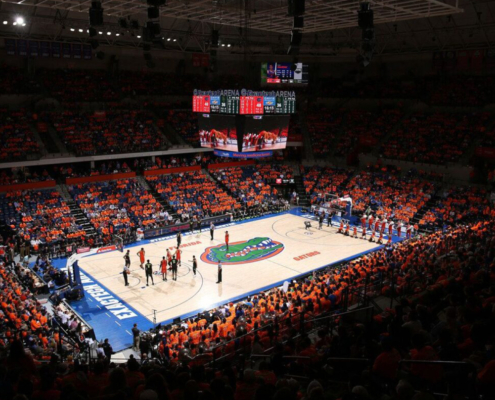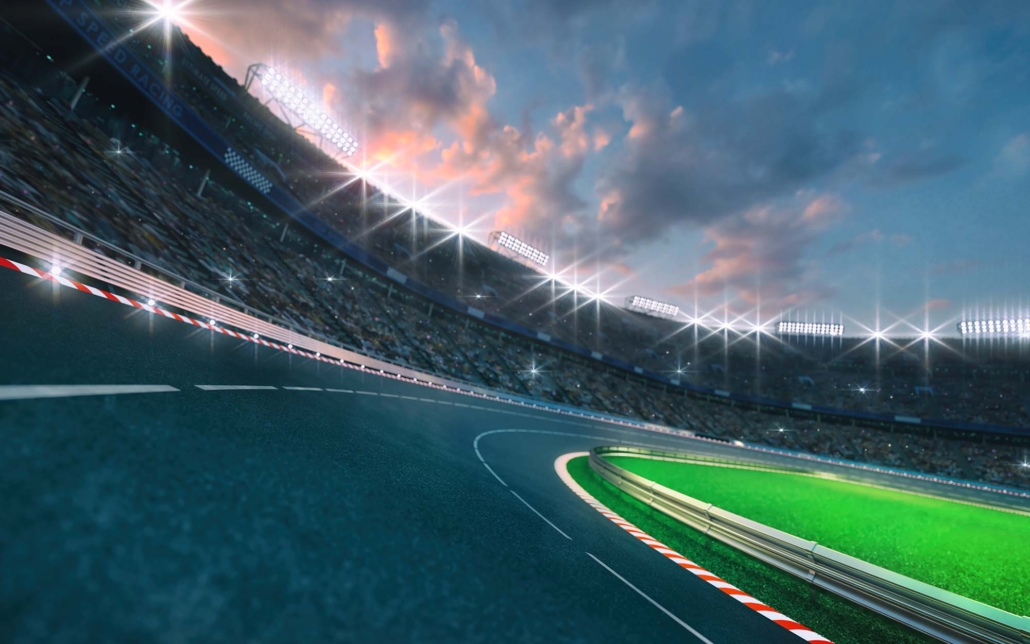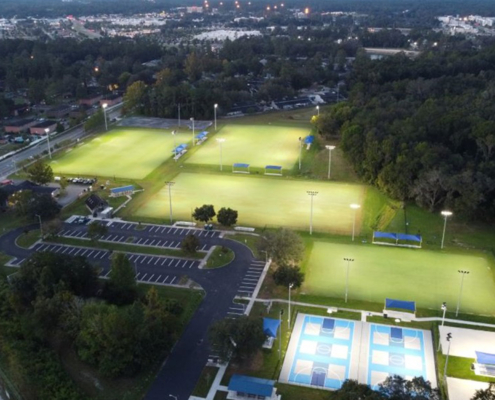 https://ngusportslighting.com/wp-content/uploads/2022/05/Homepage-Banner-2-Florida-Gators.jpg
1250
2000
AbstraktMarketing
/wp-content/uploads/2022/08/NGU-Full-Logo.png
AbstraktMarketing2024-06-18 14:33:252025-05-08 15:26:14University LED Arena Light Fixtures Guide: Types, Cost & Funding
https://ngusportslighting.com/wp-content/uploads/2022/05/Homepage-Banner-2-Florida-Gators.jpg
1250
2000
AbstraktMarketing
/wp-content/uploads/2022/08/NGU-Full-Logo.png
AbstraktMarketing2024-06-18 14:33:252025-05-08 15:26:14University LED Arena Light Fixtures Guide: Types, Cost & FundingHow To Choose the Right Race Track Lighting
You may have seen horrific accidents in racing. A major responsibility of facility managers and lighting providers is protecting the safety of drivers. A bright, uniformly lit track creates a clear and safe experience for performers and spectators.
Metal halide and other conventional lighting sources are on the way out. Switching to LED race track lights boosts energy efficiency and lower costs, but most of all, it reduces glare for drivers and enhances your venue. Here’s everything you need to know about race track lighting:
LEDs Light the Way for Race Track Lighting
Locations like race tracks demand specific lighting requirements. Large-scale events with massive crowds and large TV viewership need bright stadium lighting, but providers and facility managers must also ensure that brightness won’t affect the driver. Overly bright fixtures cause distractions and glare, and the last thing you want is to blind a driver in the middle of a race.
This article will explain the necessary steps to select the best race track lighting for your venue, what to avoid with other sources, and a few recommended lighting fixtures to install.
Conventional vs. LED Race Track Lights
Metal halide is the most common type of conventional lighting found in big venues nationwide. This lighting is much cheaper, but requires extensive maintenance and replacement. Metal halide lighting lasts 6,000 to 15,000 hours—almost three times less than modern LED technology. Conventional sources also suffer from overheating and flickering, both potential risks to drivers and spectators.
LED lighting is the most energy-efficient option on the market, exploding in popularity in the past decade for stadium and arena lighting. LEDs last over 50,000 hours and don’t overheat, lowering maintenance and replacement costs. LED race track lights turn on immediately and rarely experience flickering.
How To Select a Race Track Lighting System
Whether you’re hosting a NASCAR event or a local drag race, proper lighting is one of the most important factors to consider in the environment. Here’s what to look for when selecting your lighting system:
Brightness
Brightness is the first consideration in choosing your lighting system, and LEDs are the leader for illuminating the track. High-quality LED lighting is great for fans and spectators, while brightness is necessary for driver vision and protection.
Race tracks are required to have a brightness level of 700 lux to 1,000 lux. Vertical and horizontal brightness must be up to 2,000 lux. Horizontal levels are the racing surface, while vertical levels illuminate the sides of the track. A lux ratio of 1:1 is recommended for any race track.
Rendering
Check out the Color Rendering Index (CRI) online. This index measures a light source’s ability to represent an object’s color accurately. The highest CRI is 100, but look for systems with an index of 75. Colors are distorted when we see low CRI, so a balanced color rendering boosts the viewing experience.
Uniformity
Uniformity is vital for a safe lighting system. The maximum number on the uniform lighting scale is 1, but it’s recommended that racing venues provide uniformity between 0.5 to 0.6. LED lighting produces the best lighting uniformity for enhancing vision and supporting driver performance.
Flicker
LED lighting is flicker-free, a considerable advantage over traditional lighting sources. 4K broadcasting is a normal part of our world now, and any flickering affects its overall quality, especially for spectacular photo-finish moments. Plus, flicker-free lighting protects drivers from lighting distractions.
Are you looking for the best race track lighting system? Direct all your questions to NGU Sports Lighting today.
Avoid Blinding Drivers With Proper Race Track Lighting
The worst-case scenario for any race track is crashes and collisions. For the safety of the drivers, facility managers must make sure that tracks are bright enough without blinding anyone in the process. Keep these factors in mind when installing your race track lighting:
Lots of Lights
Brightness is critical for race track drivers. Position your displays on all corners and straightaways to avoid blind dark spots.
Design
Design and install your lighting with a professional. The experts at NGU Sports Lighting have all the experience and knowledge to install your system for a safe and enjoyable experience.
High Lighting Locations
Make sure your lighting is at the highest point of your venue. Race tracks usually feature some of the highest overhead lighting, so the track itself is well-lit without fixtures compromising any direct vision for drivers.
Anti-Glare LEDs
Anti-glare LED field lighting is the most energy-efficient source available on the market, ideal for reducing glare that affects vision, broadcasts, and pictures. Anti-glare lighting features an effective light distribution technology, evening color perception to help athletes move safely and comfortably.
Race Track Light Fixtures
Capture all the action with NGU Sports Lighting’s track configurations. Check out our best model for race track lighting, the LUMASPORT 16:
The LUMASPORT 16 is durable and customizable, perfect for creating the safest and most well-lit racing environments. Suited for television broadcasts, the LUMASPORT 16 offers:
- A CRI of 80 for a rich picture
- Light source reliability with chip-on boards
- Greater than 92% lumen maintenance after 55,000 hours
- Excellent color temperature at 5,700K
NGU: A Leading Supplier of Race Track Lights
NGU Sports Lighting’s race track lights are cost-effective, fully illuminating, and long-lasting. Professional drivers depend on venues for safety, which is why our LED race track lights always keep you protected. Contact us to install high-quality race lighting that will transform your venue.





